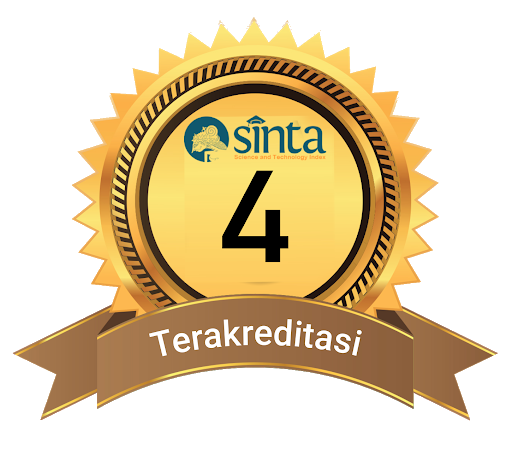Manajemen Risiko Kecelakaan Kerja Berdasarkan OHSAS 18001:2007 di Subdep Perkakas PT Pindad (Persero) – Divisi Munisi
DOI:
https://doi.org/10.21831/jim.v11i3.11783Keywords:
OHSAS 18001, 2007, Risk Identification, Risk Assessment, MitigationAbstract
Every manufacturing company faces safety risks in its production process. OHSAS 18001:2007 certification is required by international companies for ensuring that they have good safety and health management. The purpose of this research is to identify, assess, and define mitigation for safety risk in PT Pindad (Persero) – Munition Division's Appliance Sub-Department based on OHSAS 18001:2007. The result shows that the safety risk factors in Appliance Sub-Departments are electricity shock, tools graze, tools cut, sprained limb, tools crush, dust and grindstone fragments, and cutting oil burst. Those risks happen because of human behavior, infrastructure, and working tool factors as shown in fishbone diagram. Most safety risks are included in low risk category and can be handled through administrative controls and personal protective equipment (PPE) usage. Some safety risks are included in medium risk category and need to be handled through engineering control and PPE usage.
References
Abdelhamid, T., Everett, J. (2000). Identifying Root Causes of Construction Accidents. Journal of Construction Engineering and Management, 52-60.
Aksorn, T., & Hadikusumo, B. (2007). Gap Analysis Approach for Construction Safety Program Improvement. Journal of
Construction in Developing Countries, 12 (1), 77-97.
Destrianty, A., Prassetiyo, H., Ginanjar, G. (2012). Rancangan Sistem Keselamatan Kerja Berdasarkan Metode SWIFT (The Structured What-If Analysis) (Studi Kasus di Stasiun Kerja Belt Grinding Unit PRASKA PT Pindad Persero Bandung). Prosiding Seminar Nasional Teknoin 2012.
Djaali dan Muljono. (2008). Pengukuran dalam Bidang Pendidikan. Jakarta, Indonesia: PT. Grasindo.
Dunmire, T. (2002). Measuring Up to the World. ProQuest Nursing & Allied Health SourceOccupational Health and Safety, 71, 233-236.
Gyekye, S., Salminen, S. (2010). Organizational Safety Climate and Work Experience. International Journal of Occupational Safety and Ergonomics, 16 (4), 431-443.
Kurniawati, E., Sugiono, Yuniarti, R. (2012). Analisis Potensi Kecelakaan Kerja Pada Departemen Produksi Springbed dengan Metode Hazard Identification and Risk Assessment (HIRA) (Studi Kasus: PT. Malindo Intitama Raya, Malang, Jawa Timur).
Kusuma, I. (2011). Pelaksanaan Program Keselamatan dan Kesehatan Kerja Karyawan di PT Bitratex Industries Semarang.
OHSAS. (2007). OHSAS 18001:2007 Occupational Health and Safety Assessment Series.
Pitasari, G., Wahyuning, C., Desrianty, A. (2014). Analisis Kecelakaan Kerja untuk Meminimisasi Potensi Bahaya Menggunakan Metode Hazard and Operability dan Fault Tree Analysis (Studi Kasus di PT X). Jurnal Online Institut Teknologi Nasional, 2 (2), 167-179.
PT Pindad (Persero). (2007). Panduan SMK3 PT Pindad (Persero).
Sekaran, U. (2006). Metodologi Penelitian untuk Bisnis Edisi 4. Jakarta, Indonesia: Salemba Empat.
Singgih, S. (2006). SSBBTI: SPSS Statistik Non-Parametrik + CD. Jakarta, Indonesia: PT Elex Media Komputindo.
Singh, K. (2007). Quantitative Social Research Methods. New Delhi, India: Sage Publications India Pvt Ltd.
Yuliawati, S., Putri, S. (n.d.). Analisis Risiko Keselamatan dan Kesehatan Kerja pada Proses Produksi PT. Abadi Adimulia.
Published
How to Cite
Issue
Section
License
An author who publishes in the journal "Jurnal Ilmu Manajemen (JIM)" agrees to the following terms:
Author retains the copyright and grants the journal the right of first publication of the work simultaneously licensed under the Creative Commons Attribution-ShareAlike 4.0 License that allows others to share the work with an acknowledgement of the work's authorship and initial publication in this journal.
Author is able to enter into separate, additional contractual arrangements for the non-exclusive distribution of the journal's published version of the work (e.g., post it to an institutional repository or publish it in a book) with the acknowledgement of its initial publication in this journal.
Author is permitted and encouraged to post his/her work online (e.g., in institutional repositories or on their website) prior to and during the submission process, as it can lead to productive exchanges, as well as earlier and greater citation of the published work (See The Effect of Open Access).
All materials in this site are protected by the law. It is prohibited to quote a part of or all of this website contents for commercial purposes without the permission or consent of the editors.
If anyone finds one article or more in this journal violate or potentially violate one's copyrights, please report to us through e-mail of Principle Contact.
Legal-formal aspects of accessing any information and manuscript in this journal website refer to the provision of license Creative Commons Attribution-Share Alike (CC BY-SA). Read more about the Creative Commons Attribution-ShareAlike 4.0 Licence here: https://creativecommons.org/licenses/by-sa/4.0/.
All information available in 'Jurnal Ilmu Ekonomi (JIM)' is academic in nature. 'Jurnal Ilmu Ekonomi (JIM)' is not responsible for loss due to the abuse of information in the website.


.png)

